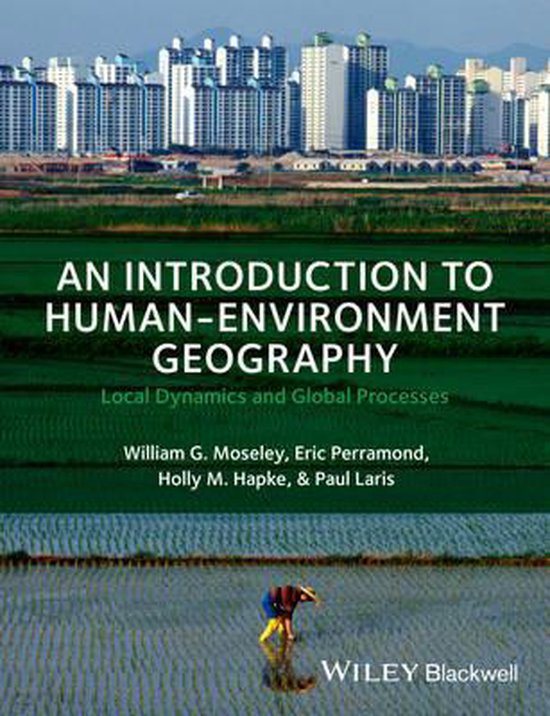
| Taal: | en |
| Bindwijze: | Paperback |
| Oorspronkelijke releasedatum: | 23 augustus 2013 |
| Aantal pagina's: | 416 |
| Illustraties: | Nee |
| Hoofdauteur: | William G. Moseley |
| Tweede Auteur: | Eric Perramond |
| Co Auteur: | Paul Laris |
| Co Auteur: | Paul Laris |
| Extra groot lettertype: | Nee |
| Product breedte: | 188 mm |
| Product hoogte: | 18 mm |
| Product lengte: | 244 mm |
| Studieboek: | Ja |
| Verpakking breedte: | 191 mm |
| Verpakking hoogte: | 21 mm |
| Verpakking lengte: | 246 mm |
| Verpakkingsgewicht: | 880 g |
| Extra groot lettertype: | Nee |
| Product breedte: | 188 mm |
| Product hoogte: | 18 mm |
| Product lengte: | 244 mm |
| Studieboek: | Ja |
| Verpakking breedte: | 191 mm |
| Verpakking hoogte: | 21 mm |
| Verpakking lengte: | 246 mm |
| Verpakkingsgewicht: | 880 g |
“A first of its kind, and in my opinion a complete winner. An introductory textbook that presents, in an engaging and accessible style, geography’s unique approach to environmental issues. Highly recommended.”
Judith Carney, UCLA
“A long-overdue textbook that is at once comprehensible while remaining accessible. The authors have done an impressive job with a clarity that is refreshing and engaging. This book provides students with a guide to this dynamic sub-field, including features such as clear chapter objectives, critical questions, and ‘ice-breakers,’ and demonstrates how to address important and complex issues in the contemporary world.”
Antoinette WinklerPrins, Johns Hopkins University
The myriad ways that humans interact with their surroundings in the natural world has consequences that are both positive and negative. An Introduction to Human-Environment Geography offers an engaging and unique view of the spatial relationships between humans and their environment across geographical locations around the world.
This introductory level text presents the rich tapestry of theoretical approaches to the tradition and demonstrates how these may be productively applied to understand human-environment interactions. Introducing many of the fundamental concepts and major theoretical traditions within human-environment geography, the book explores various thematic issues within the field – such as population, food and agriculture, and water resources. It carefully balances exposure to the theoretical underpinnings of human-environment geography with the inclusion of a variety of real-world policy questions and illustrative field-notes contributed by prominent nature-society geographers. An engaging and student-friendly introduction, it offers rich and rewarding insights into a tradition of growing importance in the twenty-first century world.